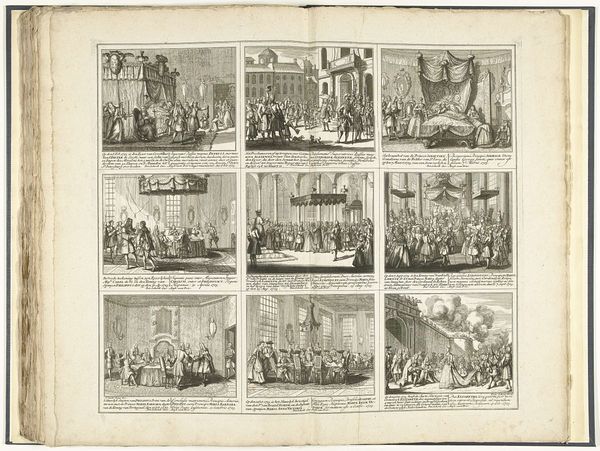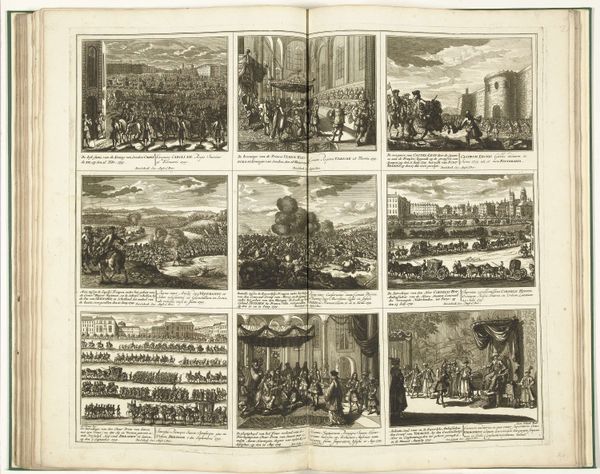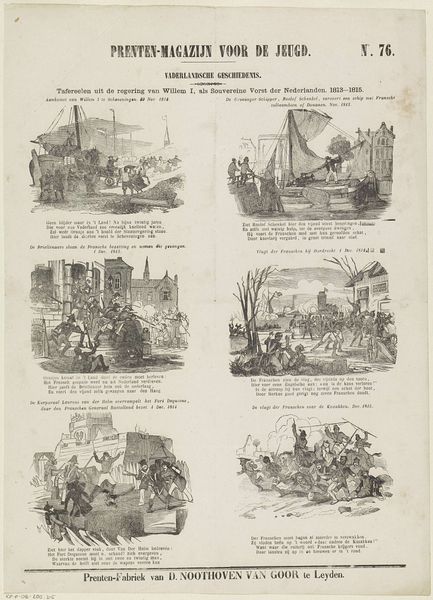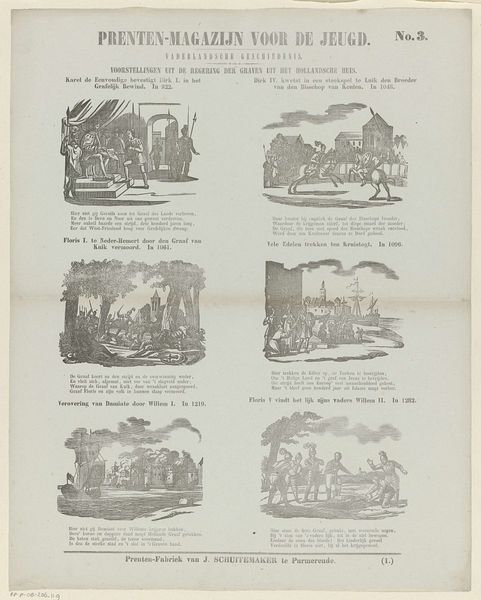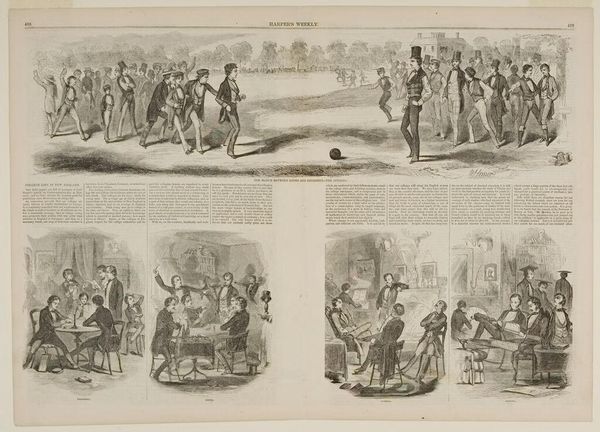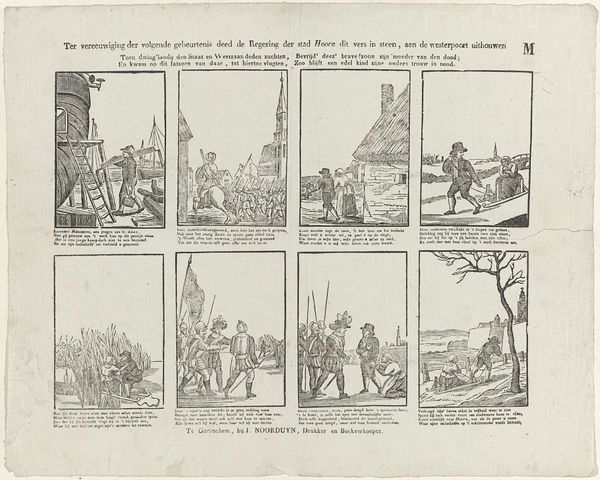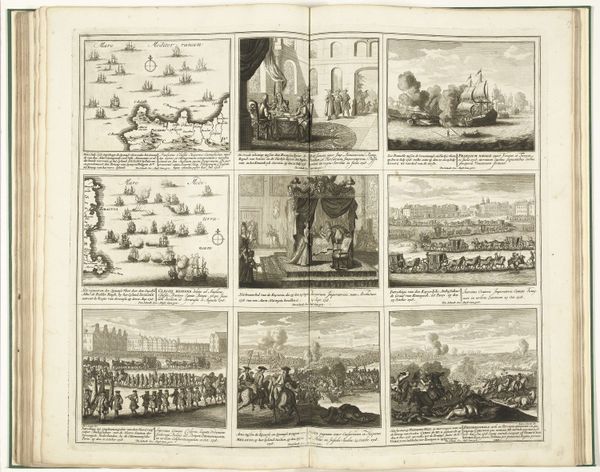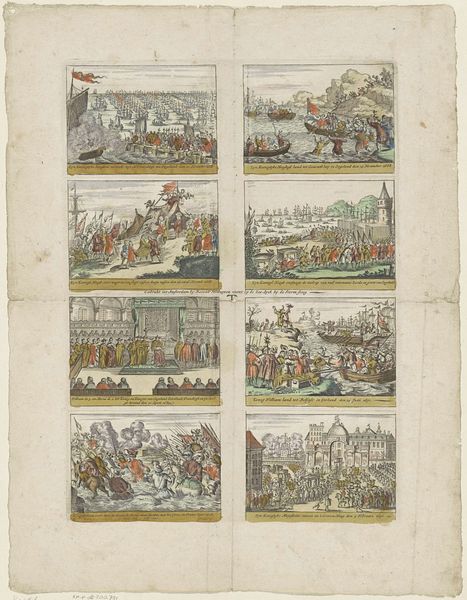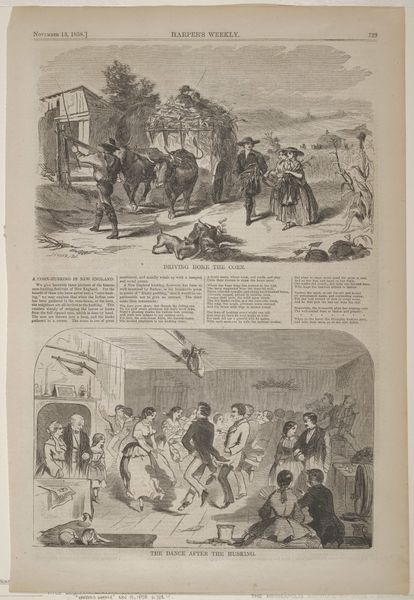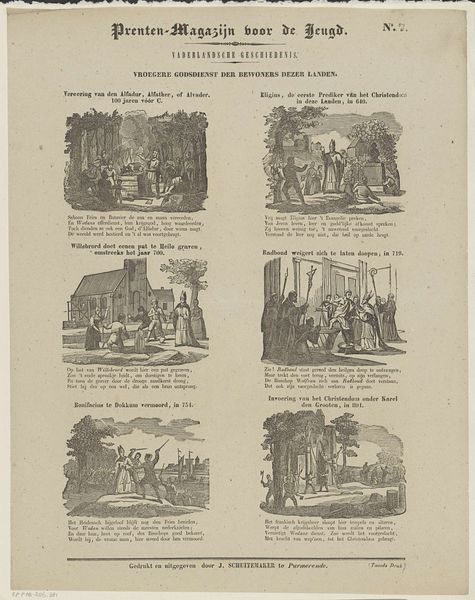
print, etching
#
narrative-art
#
baroque
# print
#
etching
#
history-painting
Dimensions: height 538 mm, width 635 mm
Copyright: Rijks Museum: Open Domain
Editor: So, here we have Pieter Schenk's etching, "Schouwburg van den oorlog (blad I)," created sometime between 1701 and 1722. It reminds me of a comic strip, each square showing a different scene of war, almost like a storyboard. What compositional elements strike you? Curator: Immediately, the grid structure is essential. Notice how Schenk divides the narrative into twelve distinct, yet interconnected, cells. The rigorous arrangement imposes a sense of order upon the chaotic subject of war. How do the tonal values within each cell contribute to the overall composition? Editor: I see how the darker, etched lines define the figures and create contrast, highlighting moments of violence but it feels quite balanced and calm overall, the shades are subtle rather than dramatic, am I right? Curator: Precisely. The subtle gradations within each scene provide internal variation, preventing monotony across the grid. Focus on the lines: consider how the linear quality of etching contributes to the detail within the architecture and figures, also observe how the horizon line changes. What might that imply about the landscape's role? Editor: That makes sense, the shifting horizon line must show that no location or vantage point is prioritized during conflict. The war spreads out across any space it invades and the format is reminiscent of maps which use shifting perspectives and scales. The artist’s viewpoint is objective, is it not? Curator: Indeed. This even, observational perspective invites the viewer to consider the totality of war, and how violence intersects with landscape, architecture, and even cartography itself. This is something to ponder. Editor: Thank you! I see so much more than I did initially, especially regarding the print’s balanced order amidst all the chaos of war and history.
Comments
No comments
Be the first to comment and join the conversation on the ultimate creative platform.

